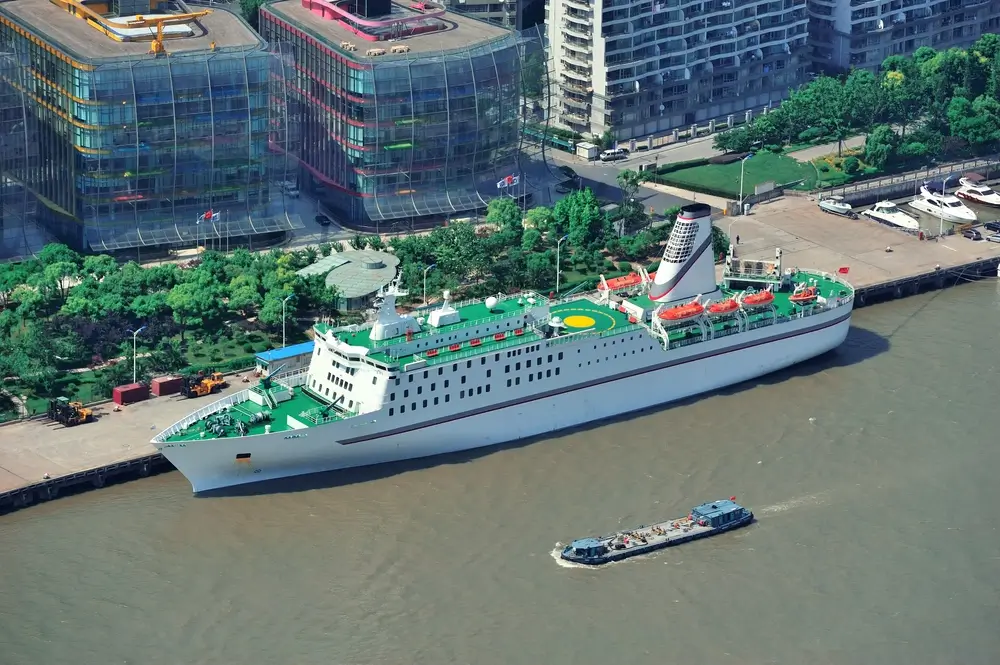The travel industry has seen some phenomenal marvels in engineering and design, none perhaps more awe-inspiring than the modern cruise ship. These floating cities push the boundaries with their intricate beauty, advanced technology, and sheer scale. But behind these massive vessels that we’ve come to love lies a world unfamiliar to many – the fascinating process of cruise ship construction. For maritime enthusiasts and travel bloggers alike, understanding the intricate process behind the majestic allure of cruise ships offers an enriching insight into a truly remarkable engineering feat.
The Birth of a Cruise Ship
The journey from an abstract idea to a sea-faring colossus begins in the minds of naval architects, engineers, and designers. Long before the first steel plate is cut, painstaking planning and design work takes place. This phase involves countless hours of collaborative efforts to ensure the vessel is not only aesthetically pleasing but also functional, safe, and environmentally compliant. The initial concept undergoes rigorous simulations and revisions, ensuring every detail aligns with the intended purpose and luxury of the cruise experience.
The Shipyard: A Closer Look
Leading the charge in cruise ship construction are some of the world’s most renowned shipyards. These facilities, often with generations of history, stand as a testament to human engineering prowess. The scale of operations within a shipyard is nothing short of extraordinary, with vast areas dedicated to the assembly of these enormous structures. Each shipyard has a unique story, from Fincantieri in Italy, known for its innovation and style, to Meyer Werft in Germany, which impresses with its efficiency and technological advancements. These spaces are where the magic happens, and steel comes to life.
Among the giants in the cruise ship construction arena are a few shipyards that stand out for their sheer scale, technological innovation, and history of producing some of the most iconic cruise ships known today. These facilities not only excel in the art of shipbuilding but also contribute significantly to the technological advancements in the cruise industry.
- Meyer Werft in Papenburg, Germany is renowned for its environmentally friendly and technologically advanced cruise ships.
- Fincantieri with main locations in Trieste and Genoa, Italy, is one of the largest shipbuilding groups in the world, known for its luxury cruise liners.
- STX France, located in Saint-Nazaire, France, specialises in building complex and innovative vessels that often set new standards in the cruise industry.
- Samsung Heavy Industries in Geoje, South Korea, though more diversified, has made significant contributions to the cruise ship market with its high-tech offerings.
- Mitsubishi Heavy Industries in Nagasaki, Japan, although it has faced challenges in the cruise ship market, has a long history of shipbuilding that includes constructing sophisticated and high-quality cruise vessels.
Key Secrets of Shipbuilding
An aspect of shipbuilding that intrigues many is the choice of materials. Durability at sea is paramount, making the selection process highly strategic to ensure longevity and safety. The use of advanced composite materials alongside traditional steel allows for robust yet lighter vessels. Shipbuilding innovation doesn’t stop at materials; cutting-edge technology plays a pivotal role in enhancing passenger experience and operational efficiency. From virtual balconies to energy-saving systems, cruise ships are becoming smarter, offering an unparalleled level of luxury and sustainability.
Environmental considerations have also taken centre stage, with shipbuilders integrating eco-friendly technologies such as LNG propulsion to minimise ecological impact. It’s a delicate balance between luxury and responsibility, pushing the industry towards greener horizons.
The Human Element
Behind every welded joint and polished rail lies the hard work of a skilled workforce. Shipyard workers, from welders to electricians, pour their expertise and dedication into every project. Their stories, often untold, are a testament to the pride and craftsmanship that go into building these vessels. It’s their hands that turn ambitious designs into physical entities ready to explore the oceans.
The cruise ship building industry not only showcases engineering and environmental innovation but also significantly contributes to global employment. According to recent industry analyses, shipbuilding, particularly in the cruise sector, sustains thousands of jobs worldwide. For instance, the European shipbuilding sector, a leader in constructing complex cruise ships, employs over 150,000 people directly and supports an additional 400,000 jobs in related industries, including suppliers and subcontractors. This reflects the vital role of cruise ship construction as a catalyst for economic activity, highlighting the industry’s importance beyond its technological and environmental achievements.
Launching and Beyond
The launch of a cruise ship is a spectacle in itself, marking the culmination of years of hard work and collaboration. But the work doesn’t end there; post-construction processes and rigorous inspections ensure the vessel is ready for its maiden voyage. Safety trials, interior finishing, and system tests are conducted with meticulous attention to detail, ensuring every guest’s safety and comfort from bow to stern.
The Future of Cruise Ship Design
Looking ahead, the industry is poised for a wave of innovation and environmental mindfulness. Trends such as sustainable design, alternative fuels, and advanced waste management systems are shaping the future of cruise ships. With these advancements, the next generation of cruise ships will not only offer extravagant, luxury travel journeys across the seas but will also pave the way for a more sustainable and eco-friendly cruising experience.
Conclusion
The allure of cruise ships lies not only in their luxurious offerings and the promise of adventure but also in the remarkable engineering and design that make such experiences possible. From conceptual drawings to the final launch, the construction of a cruise ship is a testament to human innovation and ingenuity. As we continue to explore the world, these vessels stand as symbols of how far we’ve come and how far we’re willing to go, pushing the boundaries of travel and technology in harmony with the sea.
We invite you to share your thoughts and experiences on cruise ship construction and innovation. Join the conversation and explore the wonders of maritime engineering with us.






